
Finland - miscellaneous
For a full scale picture, please click on the picture shown !
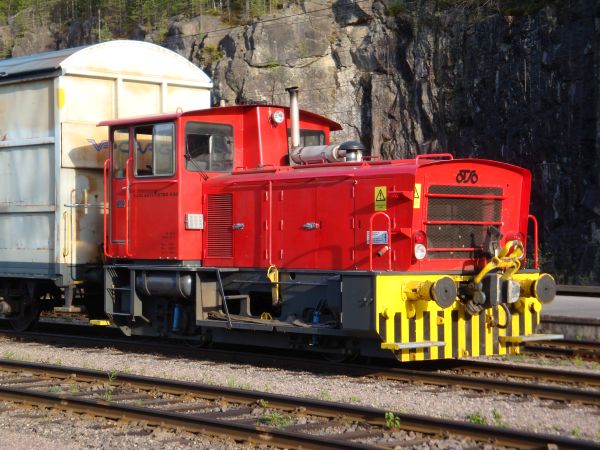
This category is for miscellaneous pictures of small private rail operators
and other railroad related pictures from Finland.
Our first photo shows a small industrial locomotive of the type Otso 4DD
built by the company Saalasti Oy and owned now by the paper factory Metsä Board Ltd in Simpele, Rautjärvi.
Picture 22.5.2009 from Simpele station by Ilkka Siissalo.
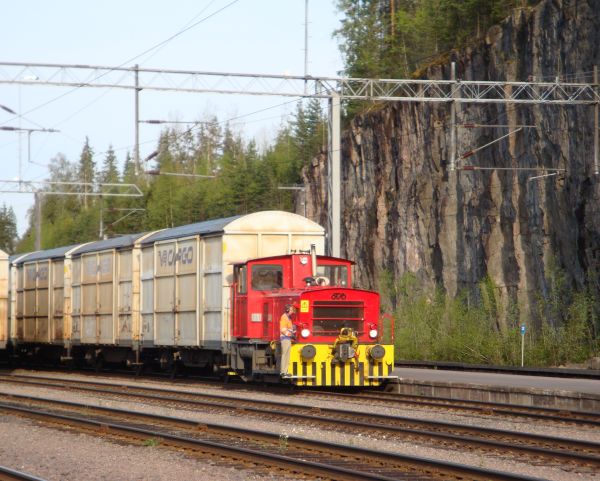
Another view of the Otso 4DD locomotive at Simpele station. The Metsä Board paper mill transfers cargo wagons from Simpele station
to the factory and back with this locomotive, along a roughly 2 km long track owned by the factory. One man can handle it all.
The locomotive is radio controllable with a small handheld device and during shunting work the driver typically stands outside his
engine.
Photo from Simpele station 22.5.2009 by Ilkka Siissalo.
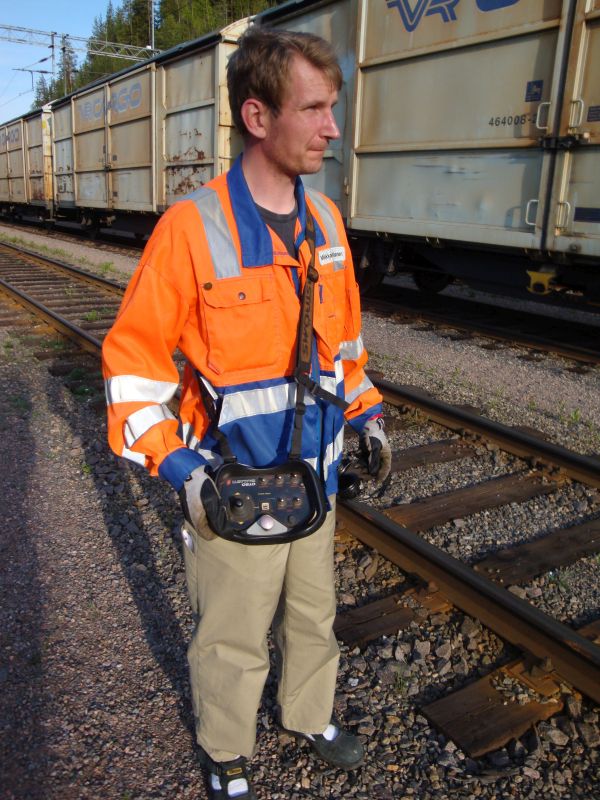
Driver of the Otso 4DD locomotive and his radio control unit.
Picture from Simpele station 22.5.2009 by Ilkka Siissalo.
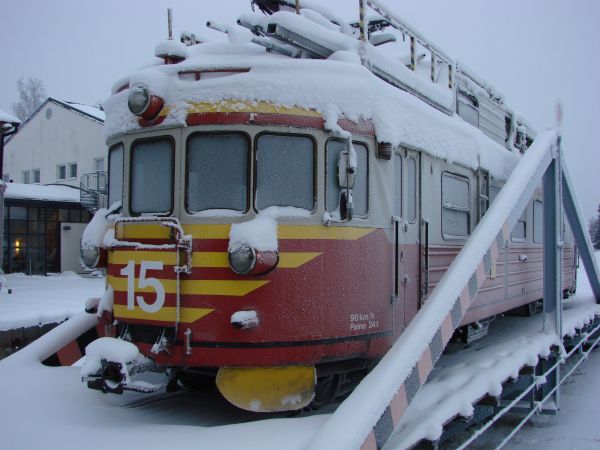
A former class Dm7 railbus modified to become a catenary wire installation vehicle.
Photo from the Finnish Railway Museum in Hyvinkää at 17.1.2010 by Ilkka Siissalo.
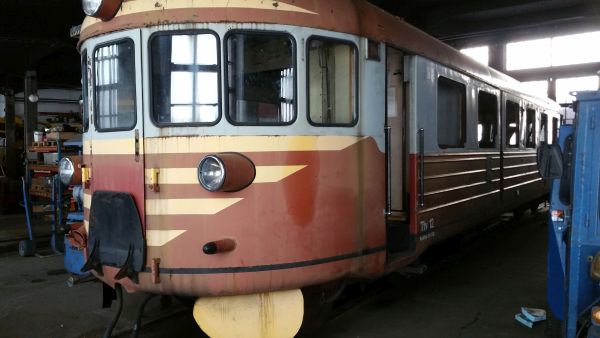
Another one of the class Ttv catenary wire installation vehicles, a former class Dm7 railbus. This one is being consumed as a
source of spare parts for other historic Dm7 railbuses at the locomotive shed of PoRha, railway hobbyists of northern Finland.
Picture from Oulu 11.11.2016 by Ilkka Siissalo.
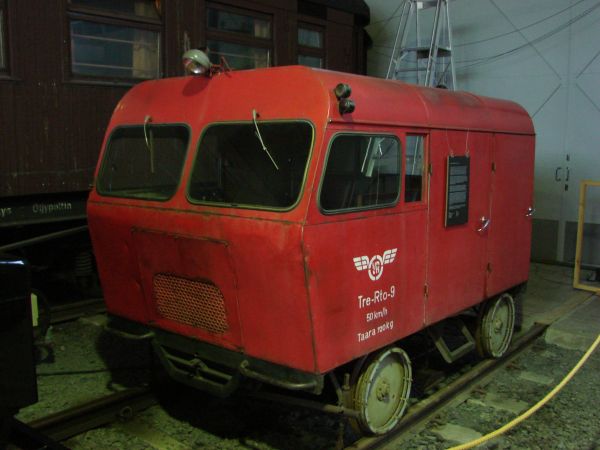
A former class Rto no.9 railcar.
Photo from the Finnish Railway Museum in Hyvinkää at 17.1.2010 by Ilkka Siissalo.
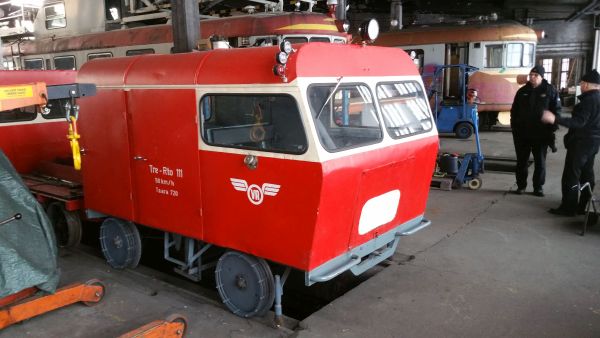
Very similar to the one above, this is the Tre-Rto 111, one of the two railcars of this type of PoRha, railway hobbyists of
northern Finland. If you look between the axles, there is a fairly peculiar hydraulic jack system right at the middle of this
railcar. It was possible with this installation to lift the wagon off tracks, turn it 180 degrees and lower it back onto the
rails and then drive back from where it came from. The machine was built by Teijon tehtaat in 1955. It weighed 1 ton, could carry
one driver + 6 other people and was able to reach a speed of 50 km/h. It had a Volkswagen engine.
Photo from a VR machine workshop in Oulu 11.11.2016 by Ilkka Siissalo.
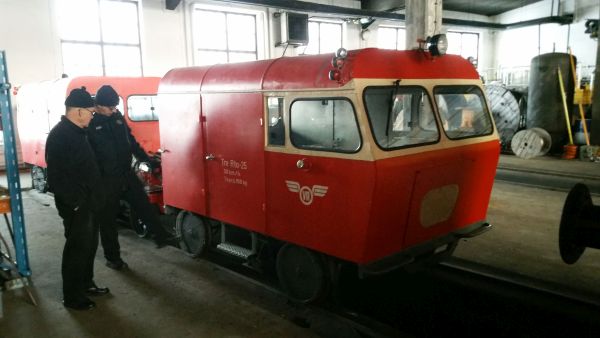
Another Tre-Rto, number 45. VR used to have a total of 150 railcars.
Photo from a VR machine workshop in Oulu 11.11.2016 by Ilkka Siissalo.
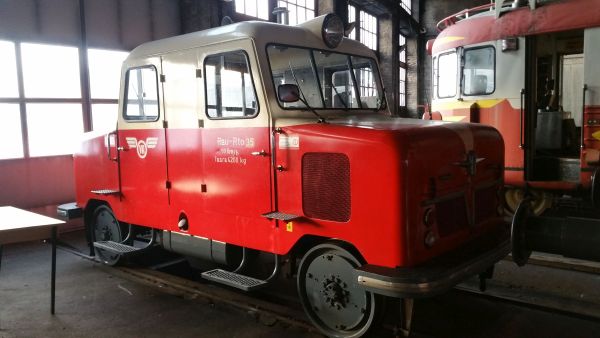
A little different railcar, the Rau-Rto 35 was intended mainly for comfortable transportation of the big bosses of VR. It was built
by the Finnish car maker Sisu in 1962 and had a Ford engine. Top speed varied between 75 and 90 km/h and it could take besides
the driver up to five passengers. The railcar is now owned by the club PoRha.
Photo from the VR machine workshop in Oulu 11.11.2016 by Ilkka Siissalo.
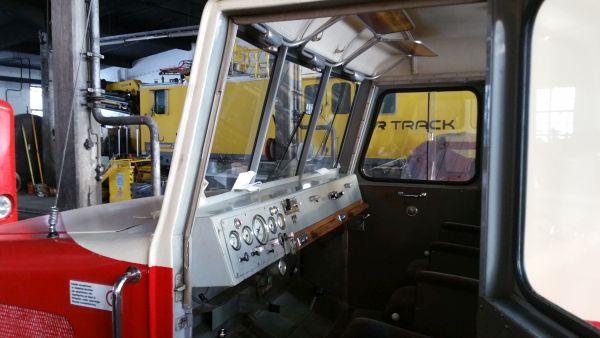
Inside view towards the driver's seat of the Rau-Rto 35 railcar. Note the pull-out tables and ashtrays for both the driver and a
passenger sitting next to the driver.
Photo from VR machine workshop in Oulu 11.11.2016 by Ilkka Siissalo.
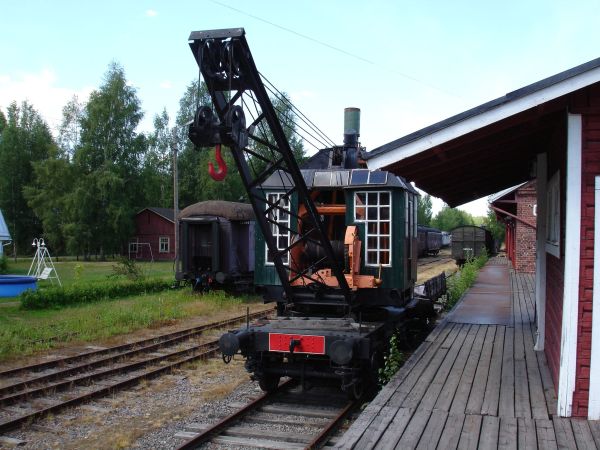
A very old steam crane, kept at that time by the museum railway Porvoo station.
Picture from the former station of Porvoo 29.7.2006 by Ilkka Siissalo.
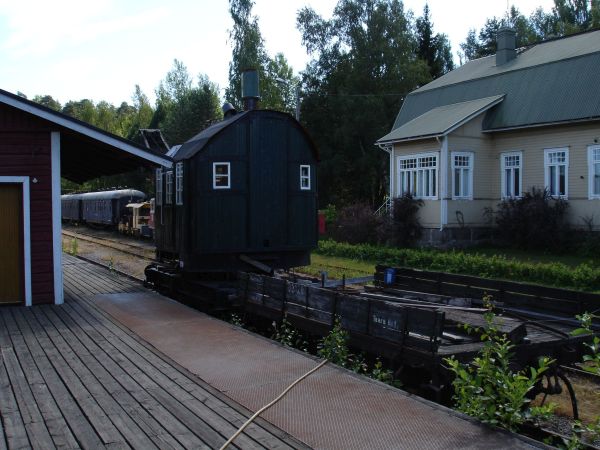
Same steam crane as above, seen from the other side.
Picture from Porvoo 29.7.2006 by Ilkka Siissalo.
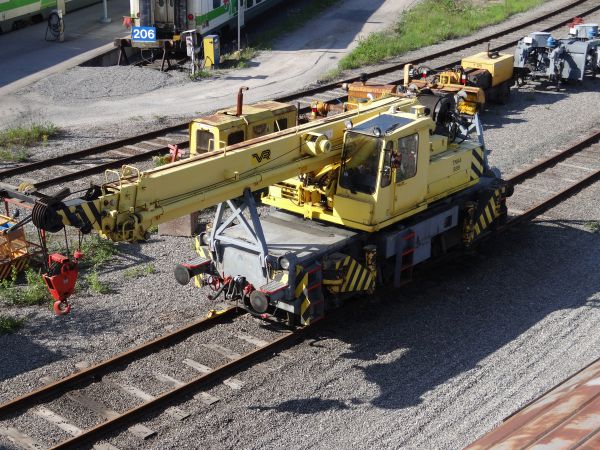
A railway crane of the class ENK4 of VR Track.
Picture from Turku 30.5.2016 by Ilkka Siissalo.
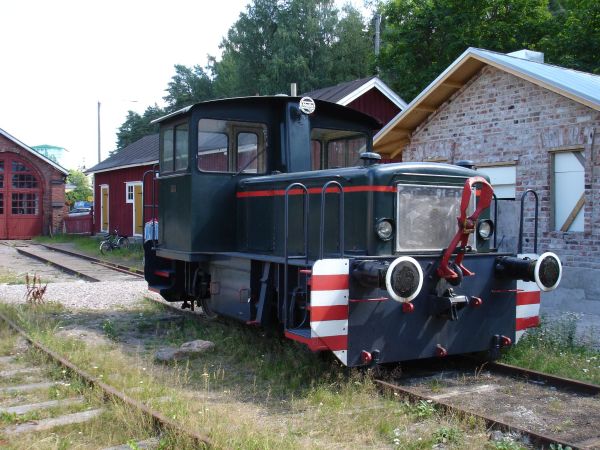
A type Otso 1 industrial locomotive made by Saalasti Oy at what was then the museum railway depot in Porvoo.
Picture from Porvoo 29.7.2006 by Ilkka Siissalo.

Is it a tractor or is it a locomotive? The answer to both questions is yes. This is a locotractor intended for shunting.
It can move both on roads and on rails. It is of the Finnish littera Dk, built by Zephir SpA in Italy. VR took two of them in use
as an experiment in 2009. One has been at the Ilmala depot in Helsinki and the other one in Hanko, Rauma and Hamina harbours.
Photo from Ilmala depot in Helsinki 24.8.2016 by Ilkka Siissalo.
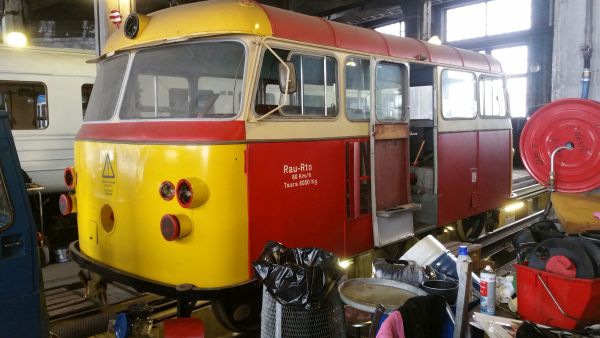
This is a 1950s small railbus of VR's class Rau-Rto. The wreck was recovered in a desolate state and is here being repaired
into working condition by hobbyists of PoRha, Pohjois-Suomen Rautatieharrastajat, the club of railway hobbyists of Northern Finland. It has just
received a new engine. Originally these railbuses were used to move track repairing workmen from cities to remote track
reparation sites.
Picture from the "VR konepaja" (machine workshop) locomotive shed in Oulu 11.11.2016 by Ilkka Siissalo.
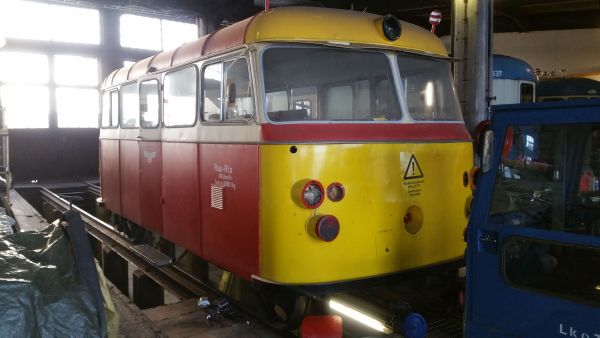
Another view of the same Rau-Rto railbus as above.
Picture from the VR machine workshop locomotive shed in Oulu 11.11.2016 by Ilkka Siissalo.
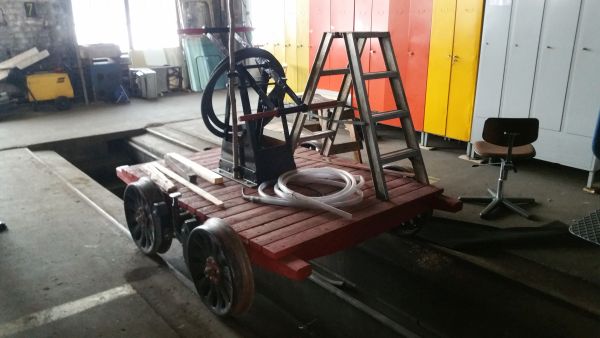
The remains - just the metal parts - of this very old draisine were found buried under sand in northern Finland. Hobbyists from
the club PoRha have restored it in workable condition.
Picture from the VR machine workshop locomotive shed in Oulu 11.11.2016 by Ilkka Siissalo.
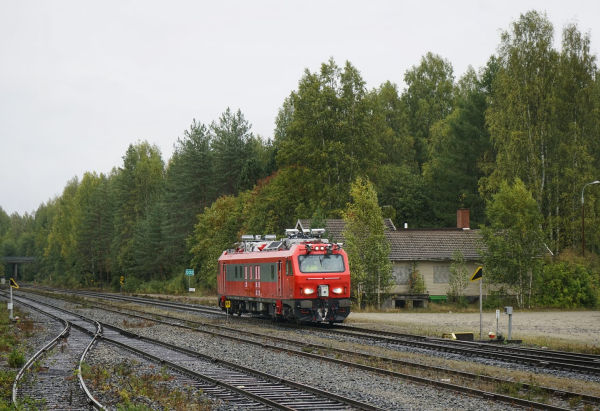
A new rail inspection and measurement vehicle Ttr 99 nicknamed "Meeri". It was built by the Italian company Mermec which still owns it.
Picture from Juankoski 15.9.2019 by Veeti Rissanen.
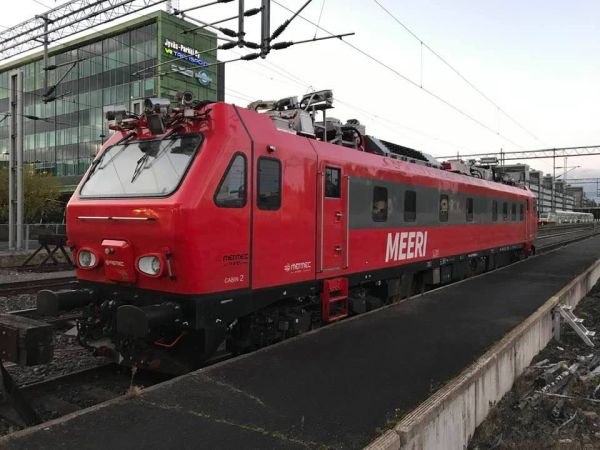
Another view of the same track inspection and measurement vehicle Ttr 99 "Meeri".
Picture from Jyväskylä 14.9.2021 by Heikki Salonen.
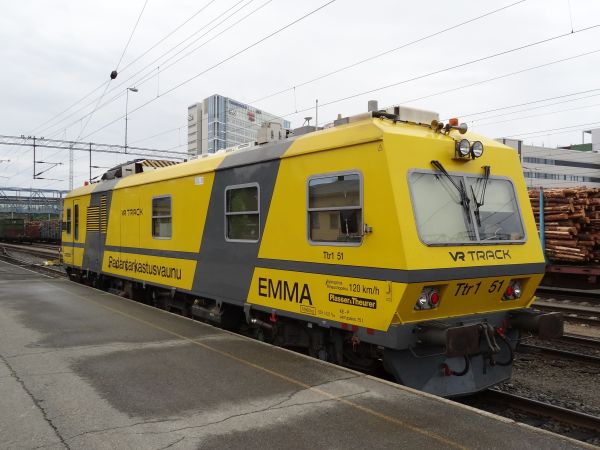
The new track inspection wagon "Meeri" shown above replaced this one, Ttr 1 no.51, nicknamed "Emma". Emma was built by Plasser &
Theurer in Austria as their model EM-120. It was taken in use in 2003. Here we see Emma at the station of Jyväskylä 9.6.2012.
Picture by Ilkka Siissalo.
Kakolanmäki funicular in Turku

The City of Turku let build a totally new, automated funicular from the city down below up a steep hill from the street Linnankatu up to the former
prison of Kakola, which has now been transformed into private housing apartments. Already before the funicular was ready it became famous in the press
as it turned out to be far more ugly than what was shown in the initial press by computer generated images. On top of that, when the funicular started
its services, it very quickly suddenly got stuck with people inside and it turned out that a multiple months worth of replanning and reinstalling was
necessary. The funicular quickly got the nickname "Jumikulaari". Jumi in Finnish means something that's gotten stuck, doesn't move at all any more.
But here we see it moving once again.
Picture from Kakolanmäki in Turku 8.9.2019 by Anne-Mari Sund.
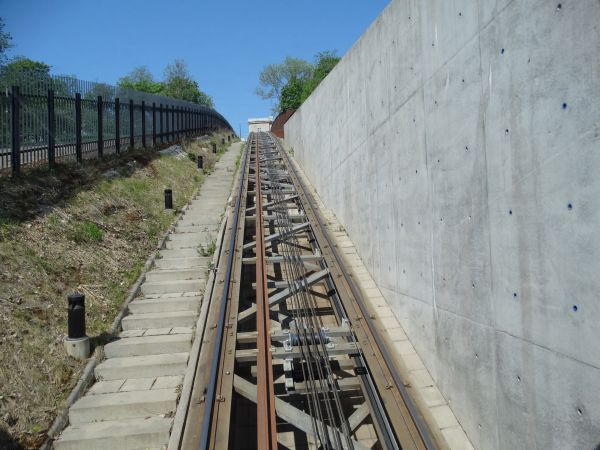
Kakolanmäki funicular's route. A normal, traditional funicular would have two wagons at the opposite ends of a wire. In this case there are multiple
wires and just one coach, but there is a heavy block of metal at the other end of the wires. That metal block moves under the rails where the funicular
runs, so it is questionable if this one should be called a funicular at all or just a lift.
Picture from Kakolanmäki in Turku 25.5.2024 by Ilkka Siissalo.
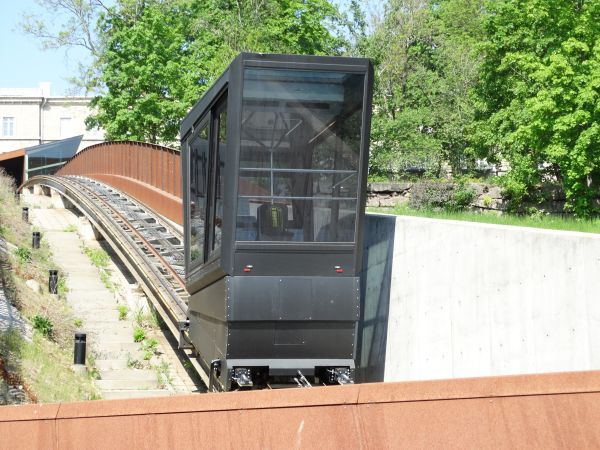
A closer look at the front side of the funicular wagon. Many people have called this extremely ugly and have likened it to the prison cells of the
former Kakola prison on top of the hill.
Picture from Kakolanmäki in Turku 25.5.2024 by Ilkka Siissalo.
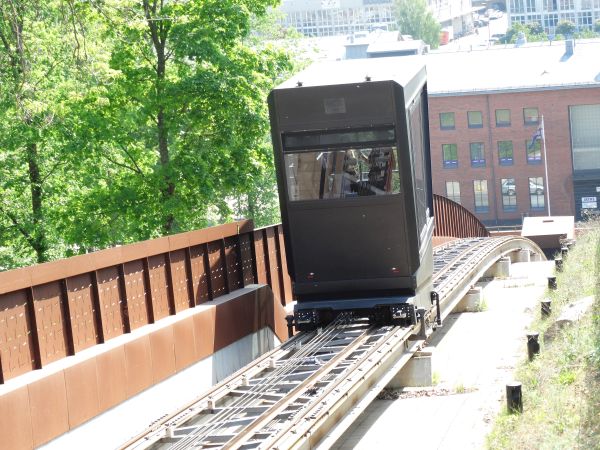
A closer look at the back side of the funicular wagon.
Picture from Kakolanmäki in Turku 25.5.2024 by Ilkka Siissalo.

